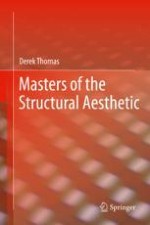2018 | Supplement | Buchkapitel
3. The Masters and Their Structures
verfasst von : Derek Thomas
Erschienen in: Masters of the Structural Aesthetic
Verlag: Springer Singapore
Aktivieren Sie unsere intelligente Suche, um passende Fachinhalte oder Patente zu finden.
Wählen Sie Textabschnitte aus um mit Künstlicher Intelligenz passenden Patente zu finden. powered by
Markieren Sie Textabschnitte, um KI-gestützt weitere passende Inhalte zu finden. powered by
